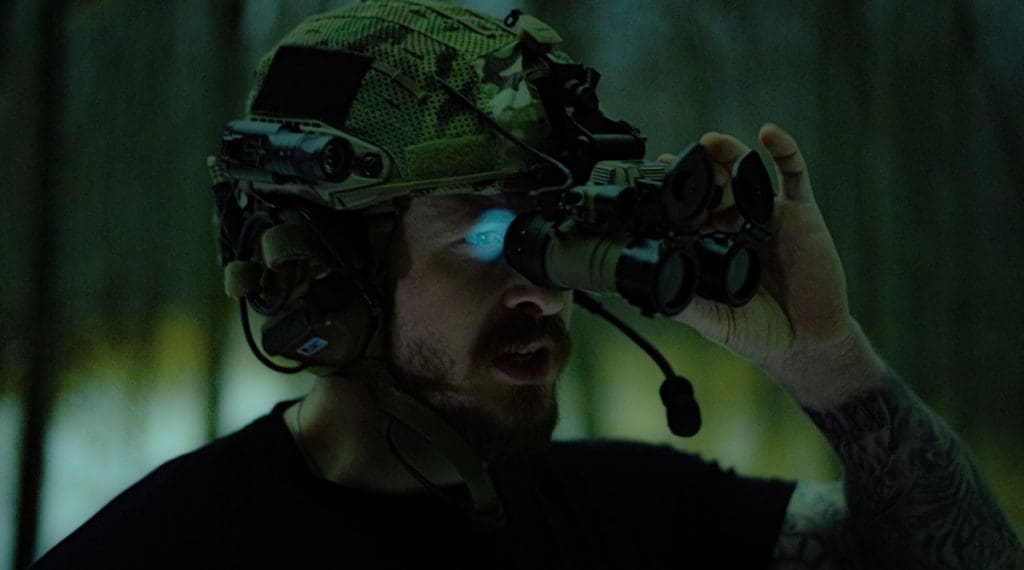I often receive images in prayer, but that night in prayer group they were different. Usually, the images were personal—if not for me, then for someone else with me. They were usually something to encourage or inspire, or perhaps (gently) challenge or correct. That night I saw visions of things happening around the world. They were at first glance terrifying—suggesting disaster, a reason to run in fear.
One image was of an explosion that produced a raging inferno—all I could see around me were flames. But then the lens seemed to shift, zooming out so to speak, and I was given a “big picture” view. I saw that the explosive fire was in fact the launching of a massive rocket ship on a beautiful sunny day. I saw that what at first seemed evil was in fact something powerful and positive. Then I heard: “What the enemy intends for evil, God intends for good.”
In another image, I saw in the sky a massive dark cloud, looking ominous. It then morphed into what looked like descending parachutes, or clusters of balloons, only they were made of a very pale beige mud. I sensed they were delivering assistance, hope, and ultimately victory—all of which God desired to bring about, and was inviting us to pray for. But my attention was being drawn to the mud.
I recalled how, in the Gospels, when a blind man came seeking sight, Jesus first put mud on his eyes. Surely the blind man must have been surprised—for just a moment, his vision was no doubt much worse! But what momentarily darkened his vision was the very means of his healing.
These images (and others like them) came two years ago, in early August of 2020, and I would have forgotten them, had it not been for the feast that followed, the Feast of the Transfiguration.
In the days leading up to the feast, these images and themes burned in my mind, and I heard repeatedly the words “Night Vision.” Soldiers are given night vision glasses, that enable them to see even in the dark.
It was on the occasion of the Transfiguration that Jesus gave night vision glasses to Peter, James, and John.
Jesus often ascended the mountain to pray, but this time He invited His closest disciples to accompany Him, to glimpse His glory. This ascent and that glimpse of glory were both to prepare for and foreshadow another ascent, and a very different kind of glory. When Jesus ascended Calvary and died on the Cross, the glory of God’s unfathomable love was lifted up for the world to see—a feast we celebrate exactly forty days after the Transfiguration, in the Triumph of the Cross.
In the moment, of course, His crucifixion did not seem like glory, but rather fearful defeat. For us too, what God is doing will often be obscured by signs of failure, danger, and even death. Like the apostles we need night vision glasses from Jesus—to be schooled in faith and trust, so that when things seem dark we will be able to see purpose and plan and hope. We are invited to hold fast to the glimpse of glory revealed in our mountaintop experiences and to let memory and hope sustain us. We are invited to remember the Triumph of the Cross, to see in those moments of darkness the promise of a glory greater than what we could imagine.
Night vision glasses are not given to armchair warriors, but to soldiers—those sent out to do battle. In Matthew 13 Jesus promises that “the gates of hell will not prevail” against the church. I have heard it said that we often interpret this defensively, as in no matter what is leveled against the church, she will survive. But the Scripture language is actually more proactive—as though it is the Church thrusting a battering ram against the gates of hell—and the gates of hell will not prevail, will not be strong enough to sustain this onslaught.
The Cross is this battering ram. We are being called to go to battle with Jesus on behalf of His people, with the confidence of His victory and the assurance that His church will prevail. We can only have this confidence if we first grow in intimacy with Him, allowing Him to replace all of our fears and false humility with a strong conviction of our identity as beloved sons and daughters destined for glory.
I don’t know what this battle will look like—I don’t think it will look anything like we expect, and perhaps not like a battle at all. Jesus waged battle as a baby in a manger, as a gentle healer, as a feeder of the multitudes, as a teacher, and ultimately as lamb on the cross. He waged battle by allowing God to show Him each day where to show up, what to do, what to respond to.
In liturgical Lent, we give 40 days to fasting, almsgiving and prayer, with a focus is on doing something to prepare for Easter. What if we spent these 40 days, between the Transfiguration and the Triumph of the Cross, focused on receiving? What if we draw close to Him and allow Him to show us a new way of seeing?
Image courtesy of Unsplash.





